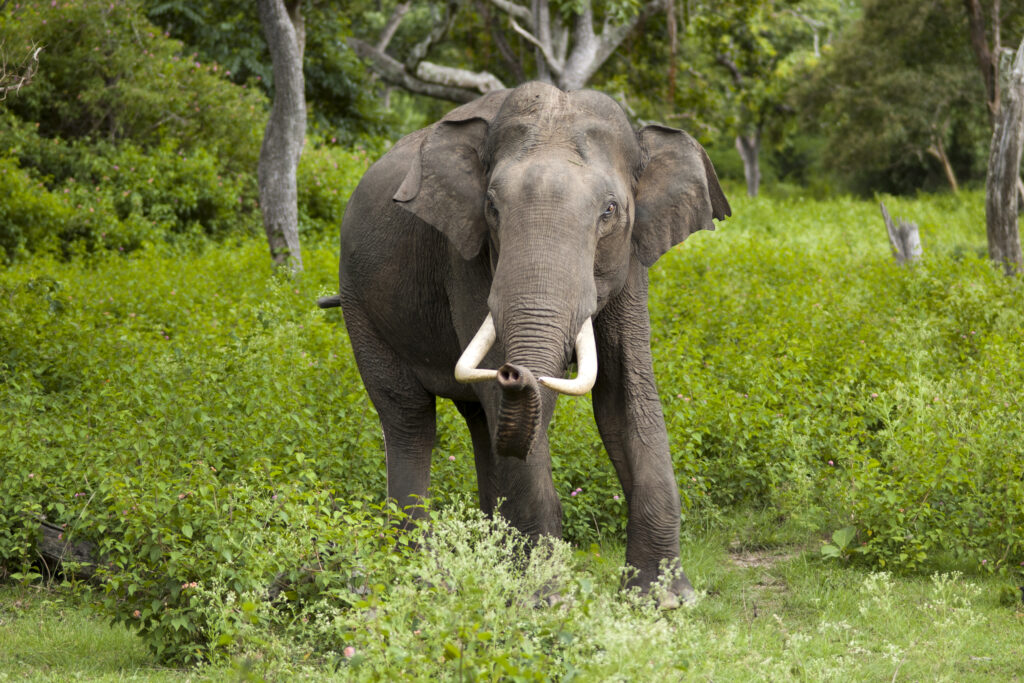The Asian Elephant: A Majestic Giant (Elephas maximus) is one of the largest land mammals on Earth and a symbol of strength and wisdom in many cultures. Found primarily in the forests and grasslands of Asia, these magnificent creatures are not only vital to their ecosystems but also hold significant cultural importance. This article explores the characteristics, behavior, habitat, conservation status, and cultural significance of the Asian elephant.

Physical Characteristics
African elephants are larger than Asian elephants, who are somewhat smaller in physical size than the former. Adult males typically weigh between 4,000 and 6,000 pounds and stand about 8 to 10 feet tall at the shoulder. Females are generally smaller, lacking the prominent tusks found in many males.
Distinctive Features
- Ears: Asian elephants have smaller ears compared to African elephants, which helps them retain heat in their tropical environments.
- Trunk: Their trunks, a fusion of their upper lip and nose, are incredibly versatile, allowing them to perform a variety of tasks, from feeding to social interactions.
- Skin: Their skin is thick and wrinkled, providing protection and aiding in temperature regulation. The skin is often covered with patches of depigmented areas that can help scientists identify individual elephants.
Habitat and Distribution
Asian elephants inhabit a variety of ecosystems, including tropical and subtropical forests, grasslands, and wetlands. They are primarily found in:
- India: The country with the most numerous Asian elephants.
- Southeast Asia: Including countries like Thailand, Myanmar, and Indonesia.
- Sri Lanka: An important habitat for the species, with a well-known population in Yala National Park.
These elephants often migrate in search of food and water, covering vast distances in their quest for sustenance.
Behavior and Social Structure
Asian elephants are social animals that live in matriarchal herds, typically consisting of related females and their young. Males tend to leave the herd upon reaching maturity, often leading a more solitary life or forming small bachelor groups.
Communication
Asian elephants communicate through a range of vocalizations, body language, and even infrasound (low-frequency sounds). Their ability to communicate over long distances is crucial for maintaining social bonds and coordinating movements.
Diet
As herbivores, Asian elephants have a diverse diet that includes grasses, leaves, fruits, and bark. Their foraging behavior plays a vital role in maintaining the health of their ecosystems, as they help disperse seeds and create paths through dense vegetation.
Conservation Status
According to the International Union for Conservation of Nature (IUCN), The population status of Asian elephants today stands at ‘endangered’. Their numbers have decreased greatly owing to the following reasons:
- Habitat Loss: Urban development, agriculture, and deforestation have reduced their natural habitats.
- Human-Elephant Conflict: As human populations expand into elephant habitats, conflicts often arise, leading to casualties on both sides.
- Poaching: Elephants are sometimes hunted for their ivory, skin, and other body parts.
Conservation Efforts
Numerous organizations and governments are working to protect Asian elephants through habitat restoration, anti-poaching initiatives, and community engagement. Sanctuaries and reserves have been established to provide safe havens for these majestic animals.
Cultural Significance
In many Asian cultures, elephants hold a revered place in mythology, religion, and folklore. They are often associated with wisdom, strength, and royalty. For instance:
- In Hinduism, elephants are associated with Ganesha, the elephant-headed god of wisdom and prosperity.
- In Thailand, the elephant is a national symbol and plays a significant role in traditional ceremonies and festivals.
These cultural connections highlight the importance of preserving Asian elephants for future generations.
Conclusion:
The Asian Elephant: A Majestic Giant is a remarkable creature that symbolizes strength and grace while playing a crucial role in maintaining ecological balance. As they face significant threats from habitat loss, human conflict, and poaching, it is imperative that conservation efforts continue to safeguard their future. By understanding and respecting these majestic giants, we can work towards a world where humans and elephants coexist harmoniously. The plight of the Asian elephant serves as a reminder of the delicate balance of our ecosystems and the urgent need for conservation.









































